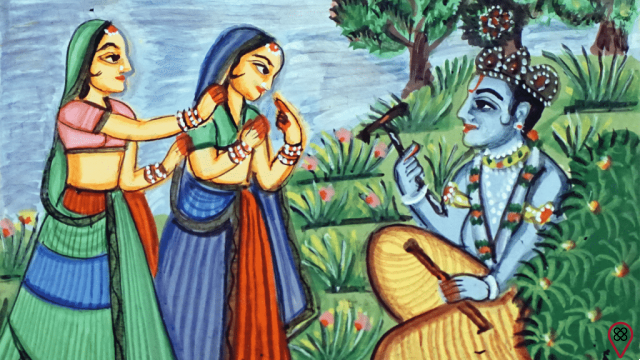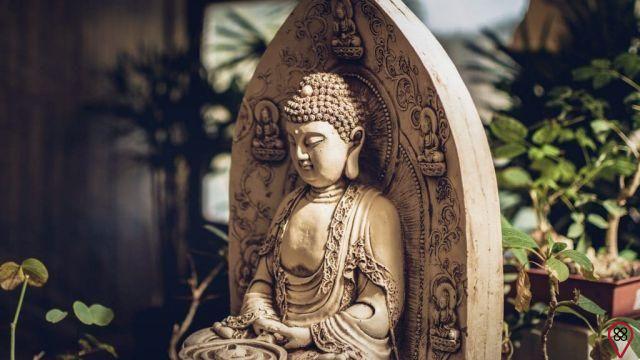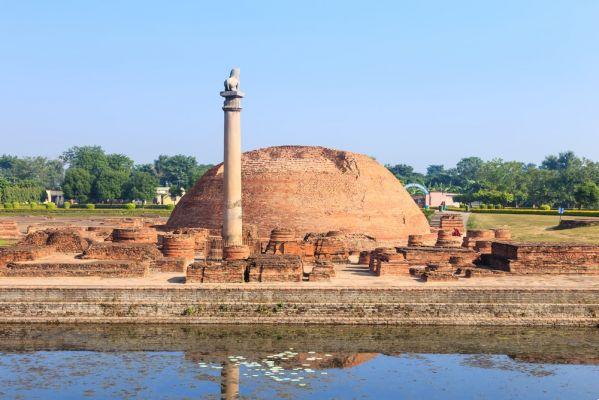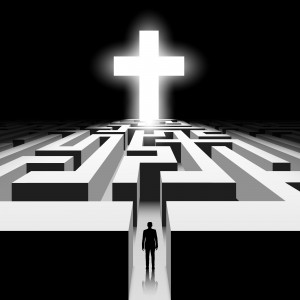The Indian territory is the cradle of cultural diversity and the reason is obvious: India is inhabited by one of the oldest civilizations in the world, characterized by a cultural mix that involves the liveliness of immense cities, the heterogeneity of its inhabitants, the chaos of sounds and the richness of colors and smells. Therefore, these are the traits that make this country unique in the world.
It is not possible to define India, a country of a thousand contradictions and facets. Therefore, in this article we talk more about India, its culture and spirituality, what Ayurveda is, what are the Hindu gods, how Indians see death and what are their customs and rituals. Follow the text to understand more about its incredible story.
The millennial charm of Indian culture
Indian civilization has a very ancient history that has always been based on strong spiritual and religious elements that have influenced its culture. After all, it is a vast territory, being one of the oldest civilizations on the planet.
In-depth studies have verified that its origins date back to about eight thousand years before the beginning of the Christian era. Consider that the Vedas, the ancient sacred texts, are temporally situated between 2.000 and 5.000 BC
However, when we talk about India, many remember only Mahatma Gandhi, who was the main leader of the Indian independence movement.
However, we must take into account the complexity of Indian traditions, aspects related to spirituality, the variety that distinguishes customs and even the different languages spoken on this vast continent.
In short, we are talking about a billion people who differ in language, musical styles, dances, architectural styles, food-related traditions and other customs.
Therefore, in each region of the Indian continent these traditions diverge, rooted in the territory for millennia, constituting the true wealth of this people. In addition, many aspects of Indian culture, including spirituality and traditions related to food, have had a strong diffusion in the world thanks to immigration.
Spirituality in the Indian Tradition
Religious belief was also distinguished in the different regions of the country. The dominant one is Hinduism, but many other beliefs have coexisted in the country, for example: Islam, Buddhism or Jainism.
To this day, Hinduism and Buddhism represent, respectively, the third and fourth religions in the world — with millions of believers.
Indian spirituality is based on simple concepts that allow people to be assiduous observers and concretely change their own life situation.
For Indians, feelings of guilt and remorse (or regret) are the basis of the soul's defeat: they represent the right path to human failure.
The wisdom of Indian spirituality is masterfully summarized in his Four Laws of Spirituality. These Laws state, first of all, that chance does not exist and that everything that happens happens for a very specific reason: to push us towards evolution.
The First Law states that each person we come in contact with has his or her own mission in our life. All the people we meet, those around us, those with whom we establish relationships are in our lives to teach us something and help us to progress.
The Second Law says that what happens is just what had to happen, and this is a lesson for our ego.
The Third Law, on the other hand, states that the moment when an event occurs is always the right one; not a moment before, not a moment after.
Finally, the Fourth Law states that when something ends, it simply means that it has come to an end and must be put aside. Undoubtedly, it is a simple wisdom, but of great impact to the Western mind. accustomed to its complex superstructures of thought.
India's most important gods
To understand more about this fascinating and interesting world, let's talk about the different gods of India for you to understand a little more about the culture of this country.
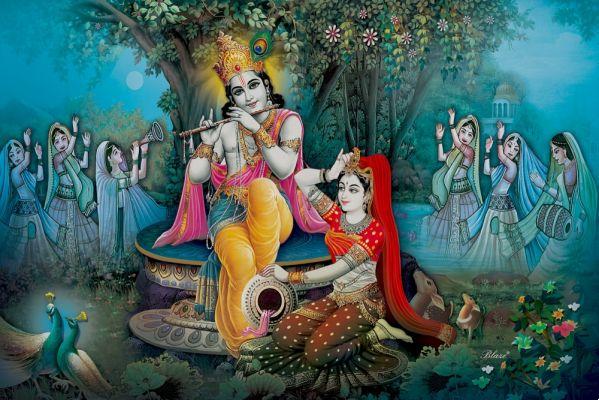
Indra:
Indra is the most important god in Hinduism. He is the god capable of protecting both other gods and human beings from the evils that lurk in both worlds. He is the supreme being who controls and watches over everything.
Agni:
Another of the most important gods is the god Agni, the god of sacrifices, fire, cooking, the Sun and the Moon. This god has the ability to control various things and for that he needs strength. If it wasn't, he couldn't control the fire.
Vishnu:
Vishnu is another of the most powerful gods in Hinduism. He has the power to balance the forces of good and evil. He is also the god known for the promise to be reincarnated 10 times – so far there have been 9.
Kama e Genesha:
Kama and Genesha are presented as the gods of love, wisdom and prudence. Specifically, Hindu believers take these two gods into consideration because, for them, love is very important.
Hanuman:
The god Hanuman is the god of music, the one who has the ability to harmonize the human body and mind thanks to his own connection.
These are just some of the gods to which many Indians are devoted.
The origin of the chakras
What was also widely propagated in India and later in the rest of the world are the chakras. The chakra system originated in India between 1.500 and 500 BC In the history of yoga, many sacred texts refer to chakras. One of the most important and known today is the Kubjikāmata Tantra (an important document of Hindu culture).
There are also other scriptures, including the Vedas, that contain more information on this subject. The concept of chakras has been passed from generation to generation for years. And ideas were passed from master to master and then recorded in written texts.
Chakra is defined as a wheel of energy that rotates from the spine to the top of the head. The concepts of the seven chakras arrived in the western world in the 1880s from the tantric yoga traditions and are increasingly studied and practiced due to the extensive benefits.
How do you see death?
In India, Hindus often cremate their dead. According to their religion, in this way they release the soul of the deceased using the god Brahma as a vehicle, represented by flames. They think that those being cremated in Varanasi obtain “moksha”, that is, liberation from the cycle of life and death.
The busiest place in India to perform this “final act” is the city of Varanasi, place of pilgrimage – and where many choose to die – where the sacred river Ganges flows, representing the place where everything ends and begins.
When a person dies, a lamp is lit that will light them for the next 3 days. After that time, they will take you to cremate and throw your ashes into the river. The funeral ceremony is led by the eldest son of the deceased, who is always dressed in white and with a shaved head or beard. Women cannot participate in this rite.
The dead man is dressed in a white cloth and the pyre is decorated with flowers. All ready to light the pyre, the eldest son circles his father 5 times and breaks a pot. It means the body's return to the 5 elements of nature. And finally, he is the one who lights the pyre.
Ayurveda
Ayurveda is an ancient science, an ancient Indian therapy that comprises a vast, very complex and the oldest therapeutic system we know, and it is the only one that has such an impressive Sanskrit language literature. Its doctrine dates back to a very distant time, and its systematization to a time between 1.500 and 2.000 BC (although scholars speak of an even more remote time).
Literally, the term “Āyurveda” designates knowledge: it is the “science” (“seeing”) that concerns “life” (“ayus”). In practice, it uses massage, nutrition, aromatherapy and phytotherapy techniques.
According to the most accredited studies, Ayurveda has its origins in the tradition of the Vedas, the sacred wisdom texts of India. The earliest traces of organized medical knowledge can be found in particular in the Atharva Veda and probably date back to before the XNUMXth century BC.
In this sense, its name reveals its nature as a medicine that treats all aspects of the human being. It does not only focus on treating the symptoms of the disease, but encourages interventions in the lifestyle in general, to regain and maintain balance within and with the environment. According to Ayurveda, the causes of any disease are, in fact, found in a person's imbalance.
Learn more about India
Below we list some fun facts about the second most populous country in the world, after China.
- 1 — The language spoken in India is Hindi, but English is known to almost everyone. Road signs, menus and train timetables, for example, are found in both languages.
- 2 — Mumbai is possibly the best-known Indian city — and it's a city of stark contrasts. As its slums come to life, its skyscrapers soar into the sky. In addition to all this, it is the most populous city in the country. It has the biggest slum in Asia, Dharavi, famous for appearing in the movie “Slumdog Millionaire”.
- 3 — The traditional greeting in India is “Namaste” and today it is even spread throughout the world. It is performed by placing the palms of the hands together at chest height, with the fingers up, while making a nod of the head.
You might also like:
- Check out 4 Laws of Spirituality Taught in India
- Uncover the meaning of Shiva for Indians
- Analyze the meaning of 9 spiritual symbols
Finally, those who know India say that it is a constant surprise in every way. There are many temples, the cuisine is different and with a lot of spice and the clothes attract attention because they are colorful and varied. Therefore, for those who want to know one of the countries where spirituality is in the air, the invitation is India!




